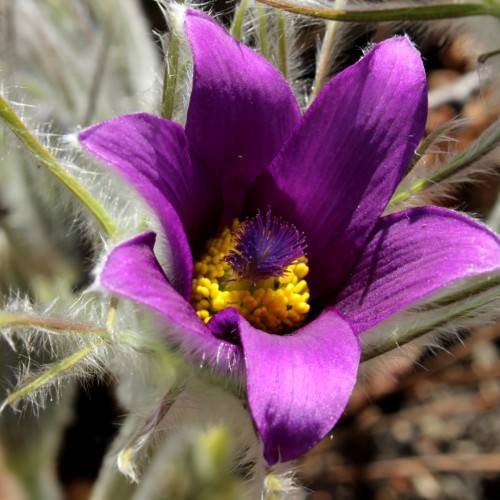
Haller's pasque flower
Pulsatilla halleri
Cycle:
Herbaceous Perennial
Watering:
Average
Hardiness Zone:
5 - 7
Flowers:
Flowers
Sun:
Full sun,part shade
Leaf:
Yes
Growth Rate:
Low
Maintenance:
Low
Drought Tolerant:
Yes
Care Level:
Medium
watering
Haller's pasque flower (Pulsatilla halleri) should be given deep waterings every 10 to 14 days, thoroughly soaking the soil but allowing the top inch of soil to dry out between waterings. During the warmer months, the flower may need more frequent waterings due to the higher temperatures. In the cooler months, the flower won't need to be watered as often. During severe drought conditions, supplemental irrigation may need to be provided to ensure the plant has enough water.
sunlight
Haller's pasque flower (Pulsatilla halleri) grows best when exposed to 6-7 hours of sunlight per day. Full sunlight is most beneficial but some afternoon shade is appreciated during the hottest months of the year. Light levels can vary during the course of the day depending on the season, but it is important to ensure that the plant is exposed to a balance of light intensity throughout the day. During the winter months, many days may not offer sufficient light, so a grow light may be needed depending on the location.
pruning
Haller's pasque flower (Pulsatilla halleri) is best pruned in late spring after the plant has bloomed and is beginning to look tired and woody. Pruning should only be performed when necessary, such as deadheading spent blooms or trimming off old foliage. Pruning should only involve removing dead or unhealthy shoots and plants should only be thinned if they overcrowd the space. When necessary, prune just enough to promote air circulation and remove any dead or damaged parts. When deadheading blooms, make sure to remove the entire stem all the way to the main stem, and do not leave any broken stems or foliage. To ensure healthy regrowth, prune Haller's pasque flower just above an outward-facing bud.
